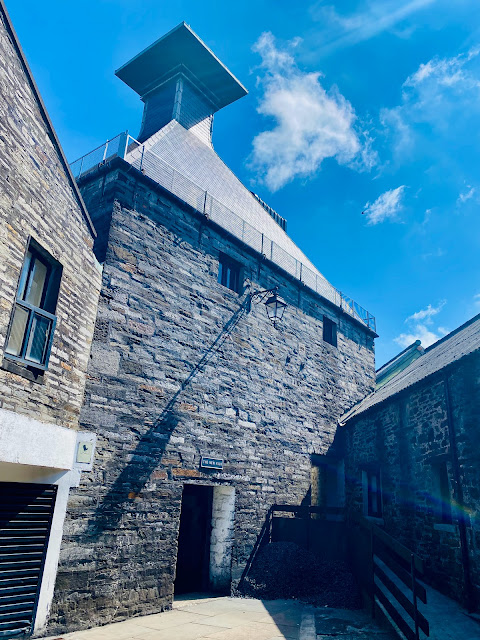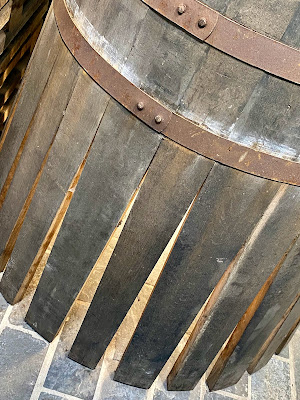The guide greeted us with bad news, however. A lorry accident that knocked out some overhead pipes two weeks prior had shut down operations temporarily.
Everything was pristine and just so. It seemed a little like a Disneyfied version of a distillery but what do I know?
After a week, workers dry the malted barley over peat fires. An extraordinarily atmospheric introductory video emphasized how much Orkney peat contributes to the unique flavor of Highland Park Scotch.
Peat and coal, the two essential ingredients of the drying process.
Milled into a dry powder called grist, the malted barley is deposited into mash tuns and soaked in spring water, turning it to "wort." After depositing the wort into wooden "wash" backs, yeast is added. Fermentation begins in the wash, continuing until it reaches an alcohol concentration of seven per cent.
The alcoholic wash is piped into the still house while the leftover wort, recycled into fertilizer, is piped elsewhere. I believe the lorry crashed into the fertilizer pipe over the highway, not pictured here.


















No comments:
Post a Comment